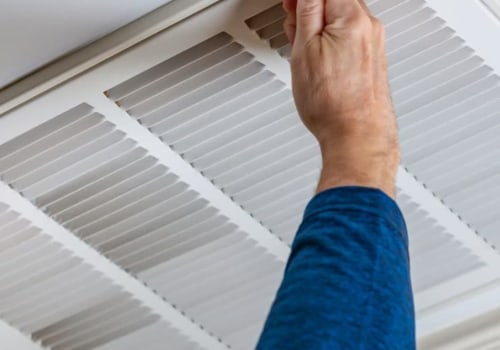Introduction
As a home insulation expert, I have seen firsthand the impact that proper attic insulation can have on a property. Many homeowners overlook the importance of their attic's insulation, but it plays a crucial role in energy efficiency, comfort, and property value. In this article, I will discuss the benefits of upgrading your attic insulation, the different types of insulation available, and the cost and process of installation.The Problem with Old Attic Insulation
If your home is over 50 years old, chances are your attic insulation is outdated and not up to current standards. The most common type of insulation used in older homes is fiberglass, which has a lifespan of about 20-30 years.Over time, fiberglass can become compressed and lose its effectiveness in insulating your home. This can lead to heat loss, poor indoor air quality, and higher energy bills. Another issue with old attic insulation is the potential for mold and mildew growth. If your attic's insulation has been exposed to moisture or water damage, it can become a breeding ground for these harmful substances. Not only can mold and mildew affect your health, but it can also cause damage to your home's structure.
The Benefits of Upgrading Your Attic Insulation
Upgrading your attic insulation has numerous benefits for both your home and your wallet.The first and most obvious benefit is improved energy efficiency. Properly insulated attics can reduce heat loss in the winter and keep cool air in during the summer, resulting in lower heating and cooling costs. Another advantage of upgrading your attic insulation is improved comfort. With better temperature control, you can enjoy a more comfortable living space year-round. Additionally, upgrading your insulation can also reduce noise from outside, making your home a quieter and more peaceful environment. Upgrading your attic insulation can also have a positive impact on your home's air quality.
As mentioned earlier, old insulation can harbor mold and mildew, which can release harmful spores into the air. By replacing your old insulation, you can improve the air quality in your home and reduce the risk of respiratory issues. Lastly, upgrading your attic insulation can increase the value of your property. In today's market, energy efficiency is a top priority for many homebuyers. By having updated and efficient insulation, you can make your home more attractive to potential buyers and potentially increase its value.
The Different Types of Attic Insulation
When it comes to upgrading your attic insulation, there are several options to choose from.The most common types of insulation are fiberglass, cellulose, and spray foam.
Fiberglass Insulation
Fiberglass insulation is made of tiny glass fibers and is the most widely used type of insulation. It is relatively inexpensive and easy to install, making it a popular choice for homeowners. However, as mentioned earlier, fiberglass has a shorter lifespan compared to other types of insulation.Cellulose Insulation
Cellulose insulation is made from recycled paper products and is an eco-friendly option for insulating your attic. It is also more resistant to mold and mildew growth compared to fiberglass.However, it can be more challenging to install and may require professional assistance.
Spray Foam Insulation
Spray foam insulation is a newer type of insulation that has gained popularity in recent years. It is made of polyurethane foam and is applied as a liquid that expands to fill any gaps or cracks in your attic. This type of insulation provides excellent air sealing and has a high R-value, making it a top choice for energy efficiency.The Cost and Process of Insulation Installation
The cost of upgrading your attic insulation will depend on several factors, including the type of insulation, the size of your attic, and the contractor you choose. On average, homeowners can expect to pay between $1,500 to $3,000 for insulation installation. The process of installing new insulation typically involves removing the existing insulation, air sealing any gaps or cracks, and then installing the new insulation.Depending on the type of insulation, this process can take anywhere from a few hours to a full day.
Conclusion
Upgrading your attic insulation is a smart investment for any homeowner. It can improve energy efficiency, comfort, air quality, and property value. With various types of insulation available and professional contractors to assist with installation, there is no reason not to upgrade your attic's insulation. Don't let old and outdated insulation affect your home's efficiency and your family's health.Upgrade your attic insulation today and enjoy the benefits for years to come.



